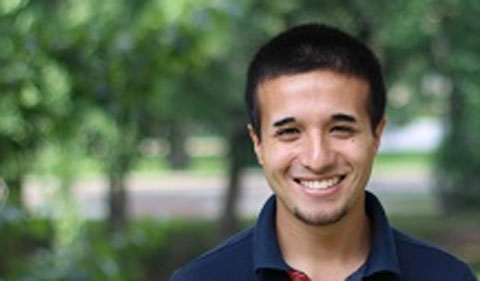The Geological Sciences Colloquium Series presents Alex Nadas and Trey Klopfenstein, Geological Sciences graduate students who present their research on Sept. 29 at 4:10 p.m. in Clippinger 205.

Alex Nadas
Nadas presents “Initial Analysis of DNAPL Contamination and Vapor Intrusion in Dayton, OH”
Abstract: Vapor intrusion originating from volatile organic compounds (VOCs) represents a growing concern for toxic chemical exposure to the public. A former manufacturing site in Dayton, Ohio has experienced soil and groundwater contamination due to leakage from underground storage tanks containing trichloroethylene (TCE), perchloroethylene (PCE), and chloroform. Sample data provided by the Ohio EPA was analyzed to determine the extent of soil vapor and groundwater contamination as compared to indoor air concentrations in nearby residential homes.

Trey Klopfenstein
Klopfenstein presents “Searching for High Frequency Sequences Within the Upper Mississippian in South-central Ohio”
Abstract: The Allensville Member of the Logan Formation (Late Tournaisian; 341-359 Ma) in south-central Ohio is an anomalously coarse-grained unit deposited in a shallow marine setting when tectonic subsidence rates were low and after the onset of Late Paleozoic glacial eustasy. Outcrops of the Allensville Member in western Hocking and Vinton counties have been located and measured to provide new detailed sections and employ process facies models and sequence stratigraphy to test the hypothesis that eustasy was the main control on the facies distribution within the deposits of the Logan Formation. The texture of the conglomerates, pebbly sandstones, and coarse-grained sandstones suggests deposition as transgressive lags. The grain size trends combined with the fossil and ichnofacies data are interpreted to represent 4th order sequences within a 3rd order transgressive systems tract represented by the Logan Formation.
Upcoming Colloquia
John Senko of the University of Akron on “Fe(III) reducing bacteria and the formation of “iron ore caves” on Oct. 6 at 4:10 p.m. in Clippinger 205.
Joel Barker of The Ohio State University on “What’s old is new again: Using Arctic mummified forests to predict climate” on Oct. 13 at 4:10 p.m. in Clippinger 205.
Kevin Mueller of Cleveland State University on “Using plant traits to understand biosphere functions and environmental change: lessons from studies of living plants” on Oct. 20 at 4:10 p.m. in Clippinger 205.
Peter Jahl on “Modifying and Producing Exoplanetary Interior Models for Local Stellar Systems” and Jack Seeley on “Optical and X-Ray Diffraction Analysis of Shock Metamorphosed Knox Group Dolostone from Wells Creek Crater, TN (Part II)” on Oct. 27 at 4:10 p.m. in Clippinger 205. Both are Geological Sciences graduate students.
Joshua Miller of the University of Cincinnati on “Tracking ecological change through the Anthropocene and beyond: Insights for paleoecology and conservation biology from bones on the landscape” on Nov. 3 at 4:10 p.m. in Clippinger 205.
Michal Kowalewski of the University of Florida on “Tales Told by Dead Shells: Paleobiological Approaches to Historical Ecology and Conservation” on Nov. 8 at 2 p.m. in Walter Hall 235.
Kenneth Brown of West Virginia University on “Crystals as archives into Igneous systems and processes: exploring potassium feldspar megacrysts in granites and granodiorites” on Nov. 17 at 4:10 p.m. in Clippinger 205.
Lindsey Schafer on “Statistical analysis of mining parameters to create empirical models to predict mine pool formation in underground coal mines” and Fred Twumasi on “Modeling of hydrological data to predict mine pool formation and possible discharge locations in underground mines” on Dec. 1 at 4:10 p.m. in Clippinger 205. Both are Geological Sciences graduate students.



















Comments